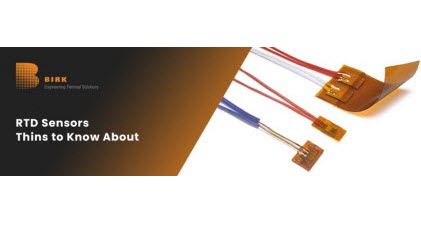In most applications, temperature is a parameter that needs to be constantly monitored. This is because the functioning of an application depends on the temperature. Hence, monitoring is important to make sure the optimal temperature is maintained at all times. For this particular function, we use temperature sensors like Resistance Temperature Detector (RTD) sensors, thermocouples, etc.
What is a Resistance Temperature Detector (RTD) Sensor? How Does It Work?
An RTD Sensor is a device that tracks the temperature of an application by measuring the change in resistance of the sensor in relation to temperature. As temperature changes the resistance of the RTD sensor changes as well. This change in resistance is predictable, depending on the resistance curve of a certain RTD, and can be measured in order to calculate the temperature that the RTD sensor is seeing.
Understanding the Components of RTD Sensors
The RTD Sensor is made of a pure metal like platinum, copper, or nickel. Generally, platinum is the preferred material because it can be used across a wide temperature range. Of all the metals, platinum provides the most accurate results.
RTD Sensors are used in various temperature sensitive applications for the following reasons:
- High accuracy
- Stable in application
- Long service life
- Offer repeatability
RTD sensors are used across several industries to perform the important task of temperature detection. Compared to other temperature sensing devices, RTDs have proven to be some of the most accurate in the industry. These devices are useful when accuracy and stability of measurements is essential.
